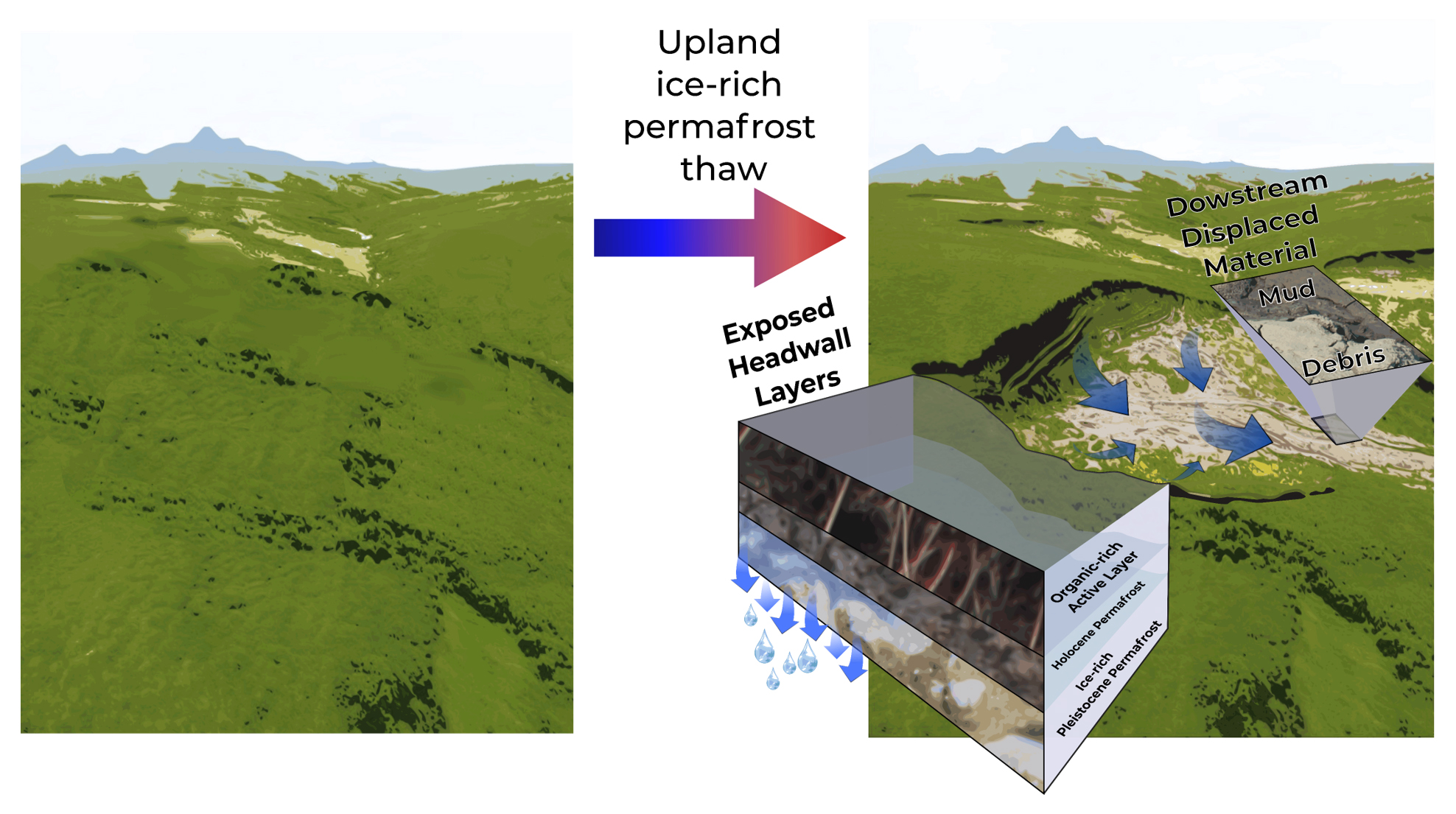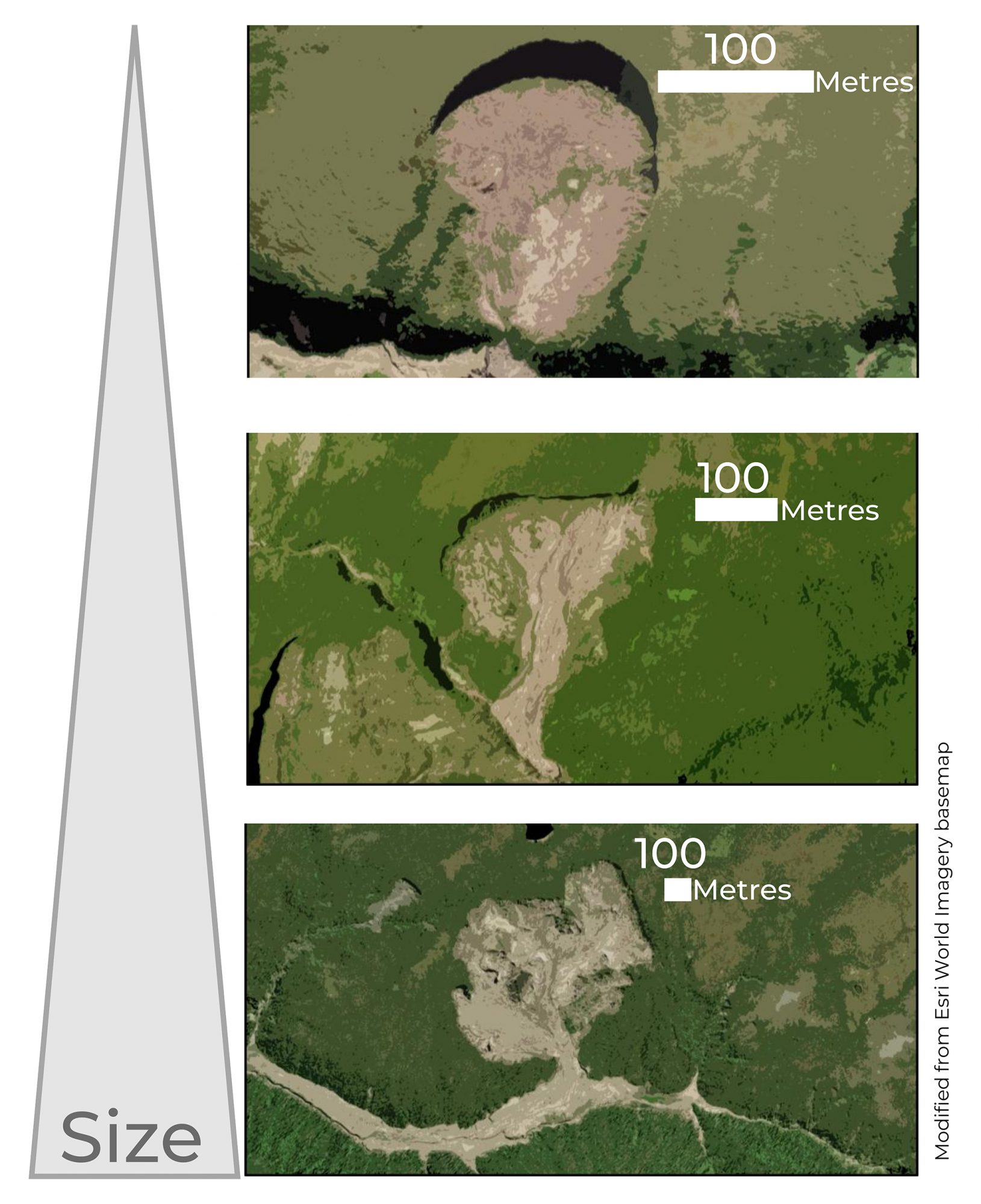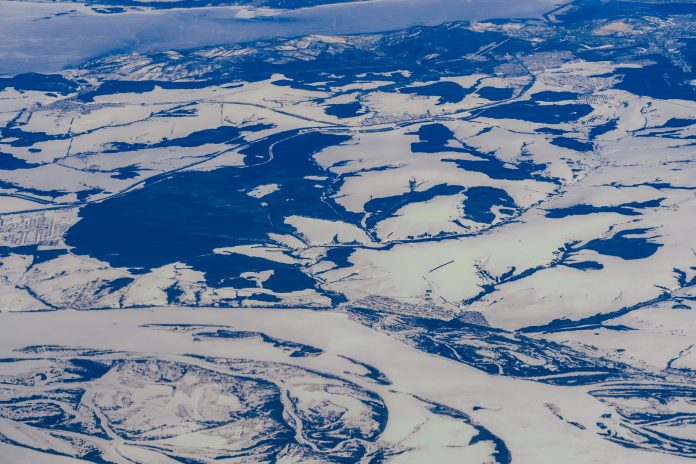Thaw slump events are local landscape degradations that are expanding with present-day warming in the Arctic, as explained by Maxime Thomas from the Earth and Life Institute at UCLouvain, Belgium
These local disturbances have broad scale impacts on soil and river ecosystems as well as on organic carbon storage.
Deep in the Siberian Arctic, about 10 km southeast of the town Batagay in Yakutia, the earth seems to have opened in two, forming a gigantic crater in the middle of the forest. This one and a half kilometre long and ~70 m deep crater, known as the Batagaika Crater, is also sometimes called the ‘Gateway to Hell’. This is an example of thaw slump event within the Siberian permafrost.
Abrupt Permafrost Thaw
The presence of ice within permafrost (the ground that remains at or below 0ºC for more than two consecutive years) governs the mechanical properties of these frozen soils. It constitutes the ‘cement’ that holds together the soil myriad of constituents. If the ground ice within permafrost soils melts, the replacing gaping voids lead to local landscape subsidence, also called thermokarsts. If an ice-rich permafrost was formed on upland areas and sloping terrain, thermokarsts emerge as thaw slumps, gullies or active layer detachments. These are referred to as abrupt thaw events because they manifest as a pulse disturbance over days to weeks, and abruptly reach previously perennially frozen materials.

One-off phenomena with significant impacts
In 1900, abrupt thaw affected 905,000 km² (~ 5 %) of the entire permafrost region. Under Representative Concentration Pathway (RCP) 8.51 emissions and climate warming projections, models estimate an increase in abrupt thaw area to 1.6 million km2 by 2100 and 2.5 million km2 by 2300. Models predict that by 2300, newly formed abrupt thaw features will be responsible for carbon emissions equivalent to approximately 40% of the mean net emissions attributed to the commonly modelled gradual top-down thawing process. Under these same projections, active hillslope thermokarst features will occupy 3% of abrupt thaw terrain by 2300 and emit one third of abrupt thaw carbon losses.
Morphology of Thaw Slumps
Retrogressive thaw slumps are a form of backwasting thermokarst occurring on upland areas (Figure 1). They can be initiated by coastal erosion or by extreme high temperature events. They manifest as a thaw slump headwall and a downstream debris tongue composed of displaced material. Once initiated, retrogressive thaw slump features grow with self-reinforcing feedbacks (e.g. continued thaw subsidence) for years to decades until they stabilise.
The headwall is comprised of (i) the seasonally thawing active layer (typically the few top tens of centimetres of the headwall) and (ii) the exposed permafrost that is perennially frozen. The headwall height varies from a few metres to tens of metres. The debris tongue of displaced material originating from the headwall extends downstream and can be a few dozens to hundreds of meters long depending on the morphology of the slump (Figure 2).

Deep material exposition and displacement
When a thaw slump is formed, material stored deep in the soil that has never thawed in the past, is exposed to the atmosphere and to liquid water: it becomes available for remobilisation. It marks the opening of a reservoir that has been frozen for millennia (Pleistocene). On the slump floor and in the debris downstream, topsoil and subsoil compartments are mixed, i.e., an active layer generally rich in organic carbon and a permafrost layer that has not (or not recently) experienced thaw. Thaw slump development generates order-of-magnitude increases in the concentration of delivered materials (sediment, nutrients, and/or organic matter) into aquatic ecosystems. Because these depressions continue to grow by several (tens of) metres every summer and the displaced material can be remobilised from the debris tongue, the impacts of thaw slumps can last for years to decades and span a considerable distance downstream.
The role of mineral elements
Soil acidity is a key factor affecting the stabilization of organic carbon with mineral elements, such as iron and aluminium. Importantly, the concentration and the form of iron and aluminium and the soil acidity largely differ between the upper and lower layers displaced by thaw slumps. When these vastly different soils degrade and mix, a new amalgamation of mineral element-organic carbon interactions can form in the debris tongue. This is why as part of the WeThaw project, Maxime Thomas investigates the changing conditions for mineral-organic carbon interactions following a thaw slump. Identifying these potential changes with abrupt thaw is needed to better predict the fate of organic carbon remobilised from debris tongue, and thereby better quantify the net impact of abrupt thaw on permafrost carbon emissions.
1 A Representative Concentration Pathway is a greenhouse gas concentration trajectory adopted by the IPCC and used for climate modelling.
 WeThaw project has received funding from the European Union’s HORIZON 2020 Research programme under the Grant Agreement no. 714617.
WeThaw project has received funding from the European Union’s HORIZON 2020 Research programme under the Grant Agreement no. 714617.
Please note: This is a commercial profile
© 2019. This work is licensed under CC-BY-NC-ND.











